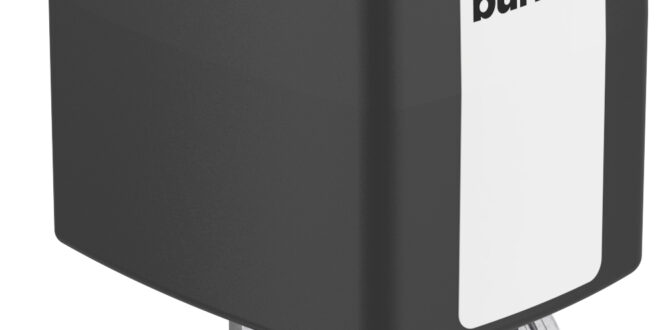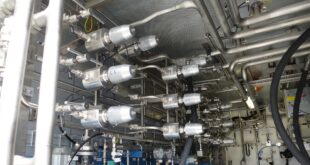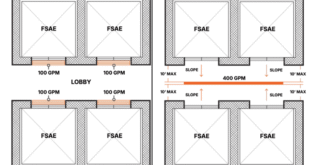Hydrogen fuel cell development has the potential to provide the sustainable solution for light and heavy commercial vehicles, as well as off road construction and material handling vehicles. Developing safe and reliable hydrogen systems for mobile use is crucial and central to this process are the solenoid valves that regulate the system. Tony Brennan explains the role they play and advises on what to look for in their selection
Designing low carbon vehicles as an alternative to the internal combustion engine, hydrogen fuel cells have an important role to play. Particularly relevant for vehicles that demand a long range, such as trucks, hydrogen fuel cells hold key advantages compared to battery electric vehicles. Chief among these is the speed and ease of refuelling, as well as significantly lower weight, enabling a higher payload and improved efficiency. These benefits are not only advantageous to commercial vehicles, as we also see hydrogen fuel cells powering a wider range of vehicles, from forklifts through to racing cars.
Solenoid valves and fuel cell design
Safety and reliability are critical to meeting the growing demand for mobile hydrogen power development. The solenoid valves on the fuel cell’s anode supply are vital, controlling hydrogen flow and ensuring safe, stable operation of the stack. First there’s the hydrogen safety shut-off valve that receives the H₂ supply and allows hydrogen flow during fuel cell operation; it also provides reliable and tight closure when the system is switched off.
Next, the hydrogen pressure control valve regulates the anode inlet pressure, based on a closed-loop system with a pressure transmitter input and PID (proportional integral derivative) control. This valve must maintain a constant pressure according to flow demand from the stack while responding to changes in upstream tank pressure.
The hydrogen pressure control valve must also compensate for disturbances in flow caused by regular switching of the drain and purge valves. The latter releases circulating gas from the system, enabling the hydrogen pressure control valve to maintain hydrogen concentration at the anode inlet. Meanwhile, the drain valve is installed at the outlet of a water separator to discharge deionised water.
Overarching requirements across these valves are the capabilities to resist hydrogen embrittlement through the use of higher-grade body and seal materials which can operate over an extended temperature range, between -40°C to +90°C, while maintaining a tight seal down to 10^-4 mbar per l/sec of Helium when closed.
Specific to mobile fuel cells and the automotive sector, the valves must also meet IP6K9K according to ISO 20653, confirming protection against high pressure water jets at close range. To achieve integration and ensure the level of ingress protection, the valve design should also integrate automotive-standard plug connections.
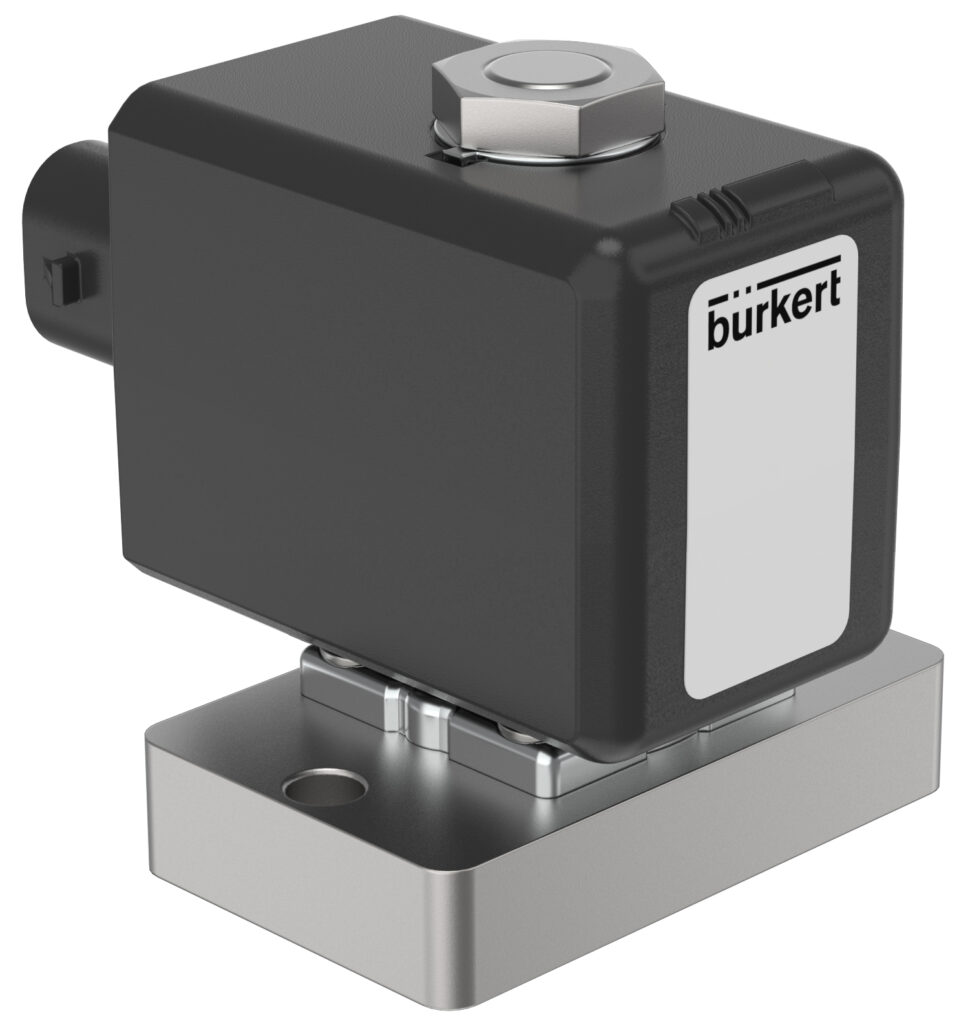
Specifying solenoid valves
Focussing on the hydrogen safety shut-off valve, a servo-assisted piston valve that can operate from zero bar pressure differential is the preferred design to handle the medium pressure hydrogen it receives, at a rate of around 25bar. This is achieved with a solenoid pilot valve that pressurises a chamber to drive the piston, and a direct spring coupling between the plunger and piston can open the valve from 0 bar differential pressure. The advantage of the servo-assisted piston valve is a highly compact design that can handle a wide pressure range, and in the case of Bürkert’s Type 6440, the valve can manage pressure up to 25 bar.
Vital to its role as a shut-off valve, the Type 6440 is tested to a leakage rate of 1x 10^-4 mbar l/s over the complete pressure range with helium, which is used as a safe industry standard in place of hydrogen. As the smallest inert gas molecule, helium testing is advantageous to detect microscopic leaks. The valve’s pressure resistance, as well as the capability to manage hydrogen temperatures between -40°C to more than 90°C, has also been achieved thanks to the development of EPDM (Ethylene Propylene Diene Monomer) seals optimised for use with hydrogen.
For pressure control, a direct-acting proportional valve is an ideal selection to precisely maintain the desired level as it can hold any position across its stroke to meet automatic setpoint control. Typically required to manage the level between 2-4 bar, optimised positioning sensitivity to control hydrogen pressure on the anode circuit should be achieved to 1% of the end value or less, matched by the same range of repeat accuracy. Integrated with an automotive standard connector, the Bürkert Type 6020 direct-acting proportional valve features a reliable curve at a higher-pressure range to maintain control of passive recirculation within the fuel cell. The valve is also tested to a leakage rate of 1x 10^-4 mbar l/s with helium.
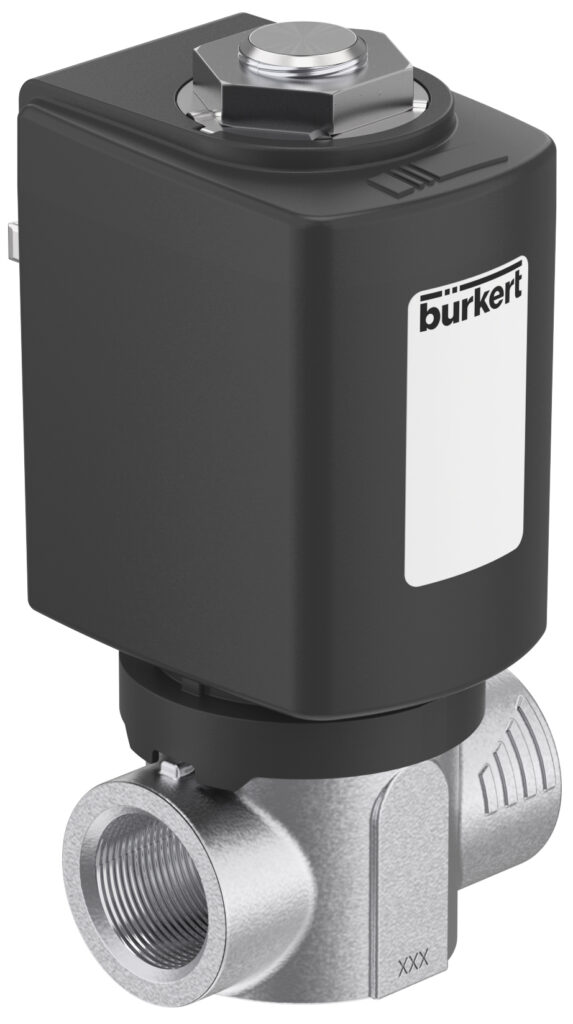
The advantage of design assistance
To maintain the desired hydrogen concentration at the stack inlet, a fast-opening purge valve with high repeatability quickly flushes diluted gas. Direct-acting plunger valves are specified as they achieve the required level of precision and repeatability at low pressure. To accurately control purge volume, rapid switching times are required, and the industry benchmark includes an opening rate between 10 and 20ms. These valves are also required to complete a high number of cycles, so reliability and long life are key.
To discharge deionised water from the system, a direct-acting plunger valve also operates as a drain valve. While this operation does not require the same level of precision, reliability and long life are also key, and here, the relative simplicity of a plunger valve design is an advantage. The Bürkert Type 6030 direct-acting plunger valve builds on this with a stainless-steel body and EPDM seals for hydrogen-specific use, combined with push-in manifold housings and IP6K9K solenoid coils.
Selecting the right solenoid valve is vital for the development of hydrogen fuel cells if they are to achieve the necessary safety and reliability for mobile applications. This makes valve design and materials specification key. Involving engineering expertise in hydrogen flow control is an effective way to achieve this goal while also ensuring the system achieves the optimum levels of durability, performance and efficiency.
Tony Brennan is an industry expert for mobile hydrogen solutions at flow control specialist Bürkert.
 Engineer News Network The ultimate online news and information resource for today’s engineer
Engineer News Network The ultimate online news and information resource for today’s engineer
